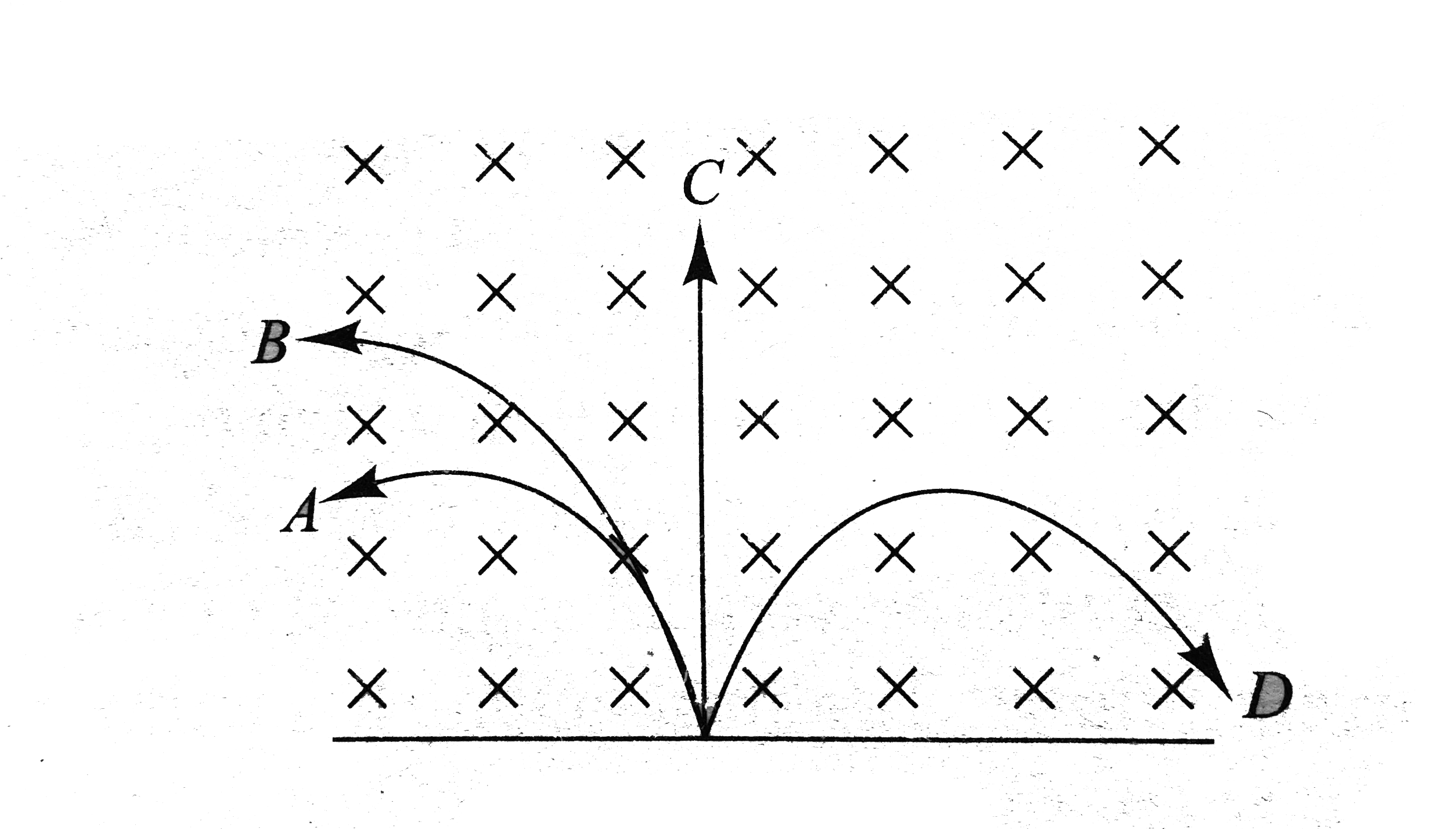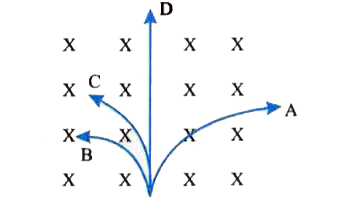The neutron, proton, electron and alpha particle are moving with equal kinetic energies. How can the particles be arranged in the increaseing order of their velocities?
alpha particle -neutron proton - electron
proton - electron - neutron - alpha paraticle
electron - ptoton - neutron - alpha paraticle
neutron - proton - electron - alpha paraticle
The correct Answer is:A
To determine the increasing order of velocities of the neutron, proton, electron, and alpha particle when they all have the same kinetic energy, we can follow these steps:
Step 1: Understand the relationship between kinetic energy and velocity
The kinetic energy (KE) of a particle is given by the formula:
KE=12mv2
where m is the mass of the particle and v is its velocity.
Step 2: Rearranging the formula
Since we know that the kinetic energy is constant for all particles, we can rearrange the formula to express velocity in terms of kinetic energy and mass:
v=√2⋅KEm
From this equation, we can see that velocity v is inversely proportional to the square root of the mass m:
v∝1√m
Step 3: Identify the masses of the particles
Now, we need to identify the masses of the particles involved:
- Mass of electron (me) is the smallest.
- Mass of proton (mp) is larger than that of the electron.
- Mass of neutron (mn) is similar to that of the proton but slightly larger.
- Mass of alpha particle (mα) is significantly larger than the other three.
Step 4: Compare the velocities based on mass
Since the velocity is inversely proportional to the square root of mass, the particle with the smallest mass will have the highest velocity, and the particle with the largest mass will have the lowest velocity. Thus, we can arrange the particles in order of increasing mass:
- Electron (smallest mass, highest velocity)
- Proton
- Neutron
- Alpha particle (largest mass, lowest velocity)
Step 5: Write the increasing order of velocities
Based on the above analysis, the increasing order of velocities is:
vα<vn<vp<ve
This means that the order from lowest to highest velocity is:
- Alpha particle
- Neutron
- Proton
- Electron
Final Answer
The increasing order of velocities is:
Alpha particle < Neutron < Proton < Electron
The kinetic energy (KE) of a particle is given by the formula:
KE=12mv2
where m is the mass of the particle and v is its velocity.
Since we know that the kinetic energy is constant for all particles, we can rearrange the formula to express velocity in terms of kinetic energy and mass:
v=√2⋅KEm
From this equation, we can see that velocity v is inversely proportional to the square root of the mass m:
v∝1√m
Now, we need to identify the masses of the particles involved:
- Mass of electron (me) is the smallest.
- Mass of proton (mp) is larger than that of the electron.
- Mass of neutron (mn) is similar to that of the proton but slightly larger.
- Mass of alpha particle (mα) is significantly larger than the other three.
Since the velocity is inversely proportional to the square root of mass, the particle with the smallest mass will have the highest velocity, and the particle with the largest mass will have the lowest velocity. Thus, we can arrange the particles in order of increasing mass:
- Electron (smallest mass, highest velocity)
- Proton
- Neutron
- Alpha particle (largest mass, lowest velocity)
Based on the above analysis, the increasing order of velocities is:
vα<vn<vp<ve
This means that the order from lowest to highest velocity is:
- Alpha particle
- Neutron
- Proton
- Electron
The increasing order of velocities is:
Alpha particle < Neutron < Proton < Electron
Topper's Solved these Questions
Similar Questions
Knowledge Check
Five particles, proton, neutron, β-particle, electron and α-particle are moving with speed v.
Ade Broglie wavelength of β-particle and α-particle is longestBde Broglie wavelength of β-proton and neutron is longestCde Broglie wavelength of β-particle and electron is longestDde Broglie wavelength of electron and neutron is longestA proton, a neutron, an electron and an α particle have some energy. Then their de-Broglie wavelengths compare as
Aλp=λn>λe>λαBλα>λp=λn<λeCλe<λp=λn>λαDλe=λpλn=λα.A proton, a neutron, an electron and an α-particle have same energy. Then their de-Broglie wavelengths compare as
Aλp=λn>λe>λαBλα<λp=λn<λeCλe<λp=λn>λαDλe=λp=λn=λα
An electron, an alpha-particle and a proton have the same kinetic energy. Which one of these particles has the largest de-Broglie wavelength ?
View SolutionWhich one is unstable among neutron, proton,electron and α-particle?
View SolutionAn electron, an α-particle, and a photon have the same kinetic energy. Which of these particles has the shortest, de -broglie wavelenght?
View SolutionA neutron, a proton, an electron and an alpha particle enter a region of constant magnetic field with equal velocities. The magnetic field is along the inward normal to the plane of the paper. The tracks of the particles are lebelled in Fig. The electron follow track......... and the alpha particle follow track..........

View SolutionA neutron, a proton , an electron and an alpha particle enter a region of constant magnetic field with equal velocities. The magnetic field is along the inward normal to the plane of the paper. The tracks of the particles are labled in the figure. The electron follows ______track and alpha particle follows track________.
 .
.
View Solution
